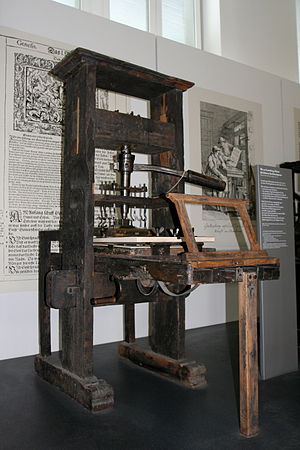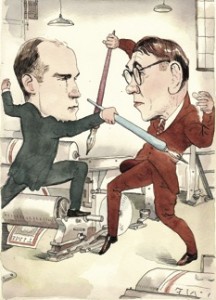As with most new technology, there are those who love e-books and those who are scared of them.
It’s been said that e-books have lowered the bar on the word count of books. Books are apparently getting shorter.
I found in “Replacing textbooks with e-books may be a mistake”, when reading online people have shorter attention spans so they don’t pay attention to as much material as they would in a psychical book. Also, people can’t read e-books the way they read physical books (highlighting, annotating, etc). Yet there is talk that e-books are replacing textbooks like having Kindles or iPads in school. However, this can create strains with different learning styles.
Let’s keep in mind Libraries and Typewriters have undergone a transformation, too. Many a Library’s budget now goes to computers instead of the space for reading. “Bye-Bye Bookstores” talks about a future with “books but no bookstores, libraries but no readers in evidence.”
“RIP Typewriters” talks about typewriters being replaced by computers. Typewriters are now being used by those hipsters who are drawn by the nostalgia. I think the same can be said about books. There will be a group of people who will view books as retro and want them but it will be for a nostalgic purpose.
With all the options out there to get e-books, people will miss out on most of everything. There are no more limitations due to language barriers or what people heard reviewed in the media. According to “The Sad, Beautiful Fact That We’re All Going To Miss Almost Everything”, when faced with all these options, people have to practice either culling (choosing what to pay attention to for themselves) or surrendering (accepting there is so much out there and no matter how hard you try you can’t read it all).
Most people do culling and throw out entire genres because it’s easier and people have to narrow their choices somehow. I believe it is evident that most people do this because of all the drop down menus that help you search through what is out there.
Culling is being in denial and thinking you can read it all — or at least, what matters.
Surrender is accepting that there is always something else to be read. But the writer says surrender can be good since it shows that there is so much cultural value in our societies.
Although many publishers feel that e-books are evil, some view them in a positive light. E-books breathe new life into reading and make it better for readers. Writers can get their work out to people when publishers wouldn’t give them the chance. Yes, e-books are even good for publishers – they can help to “expand your audience and provide them a more convenient and innovative reading experience.”
All in all, I’m excited to see where e-books can go. It’s not going away. I can definitely see a future where e-books are way more interactive, almost like you’re seeing a movie but reading at the same time. There are even tablets for kids!
After all, similar to journalism, aren’t people just trying to find the best way to tell a story?










